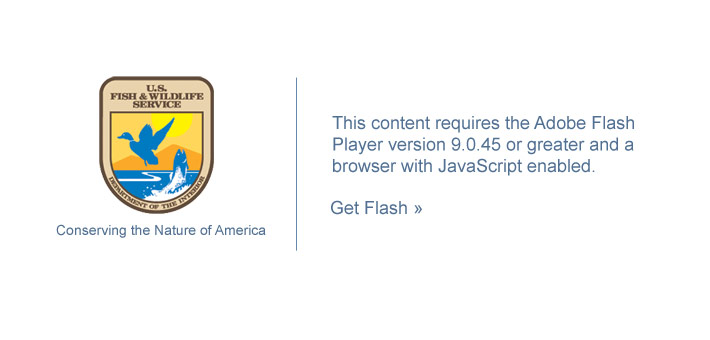|
|
Connect with Us What's New NEW! Deadline for comments on draft technical guidance for selecting surrogate species extended to March 29, 2013 Surrogate Species Draft Technical Guidance Shared Science Landscape Conservation Cooperatives Multimedia View and share videos, podcasts and updated content here. My Conservation Legacy

|
||||
A Lasting Fish and Wildlife LegacyThe U.S. Fish and Wildlife Service has been entrusted to safeguard our Nation's fish, migratory birds, aquatic species, endangered and threatened species, and public lands. The unprecedented scale and complexity of challenges we face in the 21st century, however, require us to expand our vision for conservation and the partnerships we work with to achieve it. To ensure a bright future for fish and wildlife in the face of widespread threats such as drought, climate change and large-scale habitat fragmentation, we can no longer base our actions solely on past experience and success. We must conserve landscapes capable of supporting self-sustaining populations of fish and wildlife, while also providing for the needs of people. Conserving these large landscapes, which are subject to multiple changing pressures and uncertainty, will require application of the best available science at every step. Learn more. Landscape Conservation in ActionStories and examples of applied SHC and landscape conservation can be submitted via e-mail at shc@fws.gov.
|
|||||
| To read more stories click here. | |||||


 I can still vividly recall the sunny spring day in 1968 when I heard the song of a warbler bursting forth from a nearby thicket, luring me in to investigate.
I can still vividly recall the sunny spring day in 1968 when I heard the song of a warbler bursting forth from a nearby thicket, luring me in to investigate.  Saving Our Native Prairies: A Landscape Conservation Approach
Saving Our Native Prairies: A Landscape Conservation Approach  Uncovering the Hidden Layers of Big Muddy
Uncovering the Hidden Layers of Big Muddy Applying SHC to the Pacific Lamprey Conservation Initiative
Applying SHC to the Pacific Lamprey Conservation Initiative